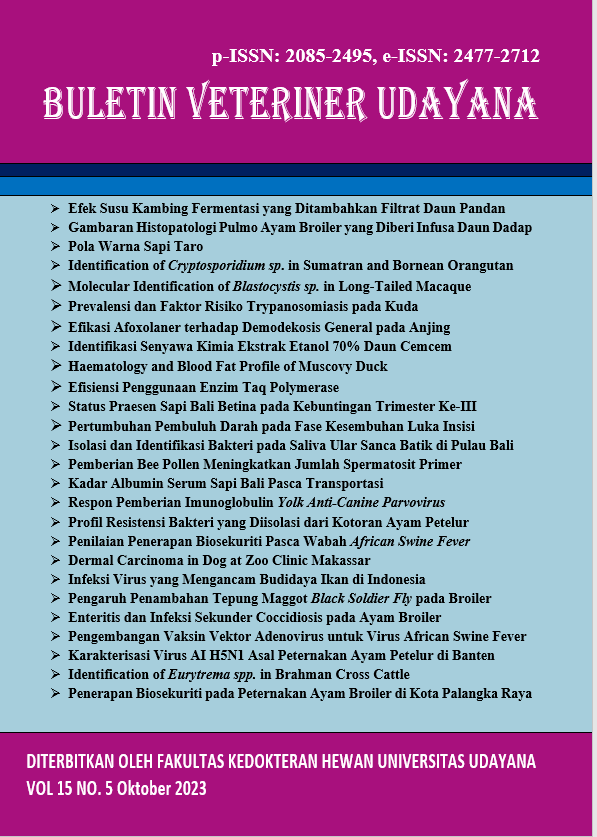A CASE STUDY OF CAT STERILIZATION IN KARANGWUNI, YOGYAKARTA: IMPACTS PERCEIVED BY CARETAKERS AND THEIR UNDERSTANDING OF THE PROGRAM
Abstract
There is yet to be collected the number of cats in Indonesia, including free- roaming cats. Studies have shown that there is a connection between sterilization and free-roaming cats’ health and welfare. In 2021, Suara Suaka Indonesia decided to hold a small-scale sterilization program in a neighborhood called Karangwuni, Yogyakarta to contribute in lowering cat population. In this case study, we focus on the effect of sterilization to cats that are perceived by humans. Survey was done using Google Forms, taking information on their demographics, involvement with Suara Suaka Indonesia, feedback on their cats’ post-surgery changes and their understanding on sterilization. Respondents are generally satisfied with the impact sterilization has on them and their cats, this is supported by how they perceive sterilization as important and their willingness to recommend the procedure to other people. However, there can still be improvement on delivering messages of sterilization to ensure that the purpose, process, and impact of sterilization can be adequately understood by all participants of the program.
Downloads
References
Cafazzo S, Bonanni R, Natoli E. 2019. Neutering effects on social behaviour of urban unowned free-roaming domestic cats. Animals. 9(12): 1105.
Crawford HM, Calver MC, Fleming PA. 2019. A case of letting the cat out of the bag why trap-neuter-return is not an ethical solution for stray cat (felis catus) management. Animals. 9(4): 171.
Driscoll J. 1992. Attitudes towards animal use. Anthrozoos. 5: 32-39.
Hosie MJ, Addie DD, Belák S. 2009. Feline immunodeficiency: ABCD guidelines on prevention and management. J. Feline Med. Surg. 11(7): 575-584.
Lepczyk CA, Duffy DC, Bird DM. 2022. A science-based policy for managing free-roaming cats. Biol. Invasions. 24: 3693-3701.
McKay SA, Farnworth MJ, Waran NK. 2009. Current attitudes toward, and incidence of, sterilization of cats and dogs by caregivers (owners) in Auckland, New Zealand. J. Appl. Anim. Welfare Sci. 12(4): 331-344.
Pandangan Jogja. “Pemilik Tak Tanggung Jawab, 10.000 Kucing Telantar Di Pasar Tradisional Jogja.” Pandangan Jogja, 7 June 2022, kumparan.com/pandangan-jogja/pemilik-tak-tanggung-jawab-10-000-kucing-telantar-di-pasar-tradisional-jogja-1yE4uXVCK7k/full.
Scott KC, Levy JK, Gorman SP. 2022. Body condition of feral cats and the effect of neutering. J. Appl. Anim. Welfare Sci. 5(3): 203-213.





